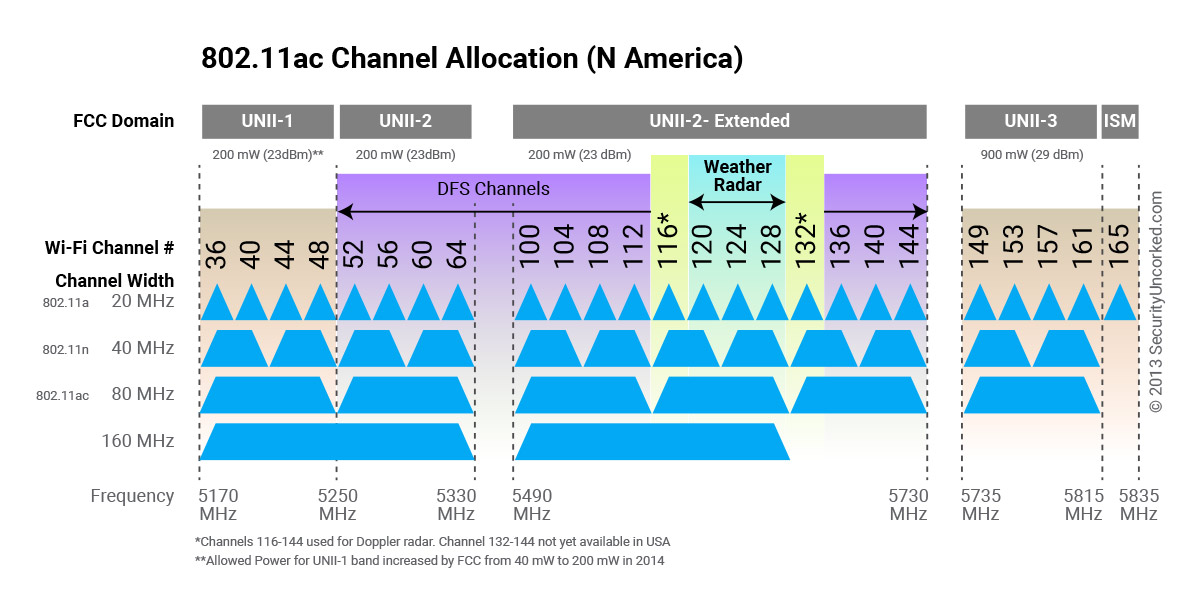I live in an extremely congested wifi environment. I don't even use the 2.4Ghz band except for low bandwidth devices.
I was doing some reconfiguration yesterday with my new router (Asus RT-AC66U_B1). I have, up to this point, relied on a AP RT-N66R router for best signal, and put it in the center of my apartment (yes, congestion is so bad here, we need a separate access point).
During the day (when most people here are away), I started testing. Baseline N66R speeds were 80-90 Mbps, max. The same settings on the AC66U were generating speeds ranging from 15% to up to 50% better (110-150), located in the same exact spot. I just assume the AC66U has better hardware, power, etc. When I upped the channel bandwidth to 80 Mhz (selected 20/40/80), the speed shot through the roof - sometimes 300-400 Mbps, especially on my 802.11AC capable devices - never seen that kind of bandwidth on wifi here. Even older machines, with only 802.11n, had 200Mbps pretty consistently.
Then, all my neighbors came home. And, as expected, the speeds started decreasing. Then out of the blue the signal went dead (no 5 Ghz). The router was alive, and no issue logging in on the 2.4Ghz. So, I've read up on DFS channels, so I'm aware the router will force the 5Ghz radio off if it detects radar, etc, on those bands - and the system was behaving like this was the case - but I wasn't on a DFS channel (I was on 149 here in the USA).
I was expecting a speed reduction during congested hours, but I was not expecting the Asus to simply turn off the 5Ghz band. Does anyone have any insight on this? I thought the 20/40/80 bandwidth selection allows the router to auto-decide the best bandwidth given the congestion in the spectrum - I didn't think it would just cut it off. I switched back to 20 MHz, and it appears stable, but that's really not ideal.
I was doing some reconfiguration yesterday with my new router (Asus RT-AC66U_B1). I have, up to this point, relied on a AP RT-N66R router for best signal, and put it in the center of my apartment (yes, congestion is so bad here, we need a separate access point).
During the day (when most people here are away), I started testing. Baseline N66R speeds were 80-90 Mbps, max. The same settings on the AC66U were generating speeds ranging from 15% to up to 50% better (110-150), located in the same exact spot. I just assume the AC66U has better hardware, power, etc. When I upped the channel bandwidth to 80 Mhz (selected 20/40/80), the speed shot through the roof - sometimes 300-400 Mbps, especially on my 802.11AC capable devices - never seen that kind of bandwidth on wifi here. Even older machines, with only 802.11n, had 200Mbps pretty consistently.
Then, all my neighbors came home. And, as expected, the speeds started decreasing. Then out of the blue the signal went dead (no 5 Ghz). The router was alive, and no issue logging in on the 2.4Ghz. So, I've read up on DFS channels, so I'm aware the router will force the 5Ghz radio off if it detects radar, etc, on those bands - and the system was behaving like this was the case - but I wasn't on a DFS channel (I was on 149 here in the USA).
I was expecting a speed reduction during congested hours, but I was not expecting the Asus to simply turn off the 5Ghz band. Does anyone have any insight on this? I thought the 20/40/80 bandwidth selection allows the router to auto-decide the best bandwidth given the congestion in the spectrum - I didn't think it would just cut it off. I switched back to 20 MHz, and it appears stable, but that's really not ideal.


